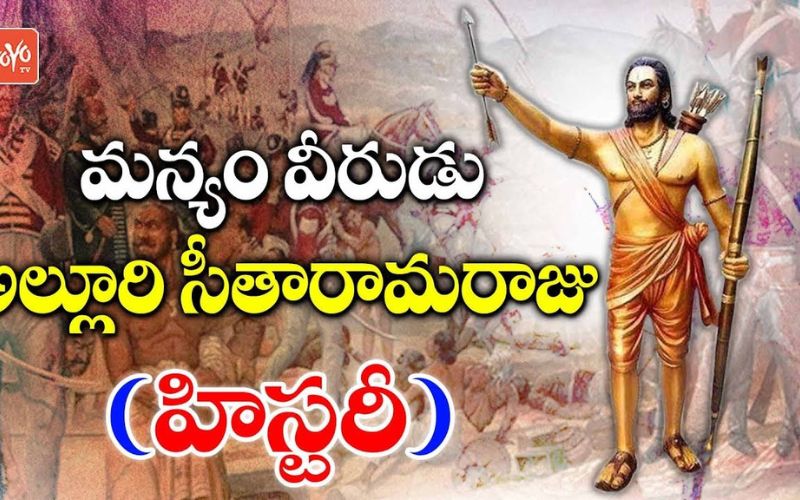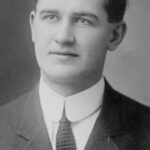Alluri Sitarama Raju was a renowned Indian revolutionary who played a pivotal role in the Indian independence movement. Born in the early 20th century in the Andhra Pradesh region, Raju’s life and legacy have become deeply intertwined with the history of Telugu culture and the fight for India’s freedom. His unwavering commitment to the cause of independence and his fearless confrontation with the British colonial authorities have made him a revered figure in the annals of Indian history.
Early Life and Education
Alluri Sitarama Raju was born on 4th July 1897 in the village of Pandrangi, located in the Visakhapatnam district of Andhra Pradesh. He was the son of Venkata Raju and Suryanarayanamma, belonging to a family with a strong tradition of military service and patriotism. Raju’s early years were marked by a deep connection to the natural world and the rich cultural heritage of his region.
As a young man, Raju received his education at the Pachaiyappa’s High School in Chennai, where he excelled academically and developed a keen interest in the Indian independence movement. His exposure to the ideas of prominent freedom fighters and his own experiences of the oppressive colonial rule fueled his growing desire to contribute to the struggle for India’s independence.
Influence of His Upbringing on His Revolutionary Ideals
Raju’s upbringing in the Pandrangi region, with its lush forests and rugged terrain, had a profound impact on the shaping of his revolutionary ideals. He grew up amidst the local tribes, the Koyas and the Konda Reddis, who had a long history of resistance against the British colonial authorities. Raju’s deep understanding of their way of life, their grievances, and their methods of guerrilla warfare would later become crucial in his own revolutionary activities.
Moreover, Raju’s family’s legacy of military service instilled in him a strong sense of discipline, strategic thinking, and a willingness to confront adversity head-on. This upbringing, combined with his education and exposure to the nationalist movement, forged Raju’s unwavering commitment to the cause of Indian independence.
Alluri Sitarama Raju’s Involvement in the Freedom Movement
Raju’s involvement in the Indian independence movement began in the early 1920s, when he returned to his native Andhra Pradesh after completing his education. Inspired by the Non-Cooperation Movement led by Mahatma Gandhi, Raju began organizing local communities and mobilizing them against the British colonial rule.
One of Raju’s earliest acts of defiance was the Rampa Rebellion, which erupted in 1922 in the Rampa region of Andhra Pradesh. Raju led a group of tribal warriors in a series of attacks on British outposts and government facilities, showcasing his strategic prowess and his ability to rally the local population to the cause of independence.
Key Events and Contributions of Alluri Sitarama Raju
Throughout the 1920s, Raju’s revolutionary activities intensified, and he became a thorn in the side of the British colonial administration. He orchestrated a series of daring raids on police stations, seized weapons and ammunition, and disrupted the colonial government’s infrastructure.
In 1924, Raju led a group of tribal warriors in the attack on the Annavaram police station, a pivotal event that cemented his reputation as a fearless and skilled guerrilla leader. The success of this raid, coupled with Raju’s ability to evade capture, made him a formidable adversary for the British authorities.
Raju’s most significant contribution to the Indian independence movement was his ability to unite the diverse tribal communities of the Andhra region under a common cause. He recognized the importance of harnessing the strength and resilience of these communities, and he leveraged their traditional knowledge of the terrain and guerrilla tactics to wage a relentless campaign against the colonial power.
The Legacy of Alluri Sitarama Raju
Alluri Sitarama Raju’s legacy as a revolutionary hero has endured long after his death. In 1924, at the age of just 27, Raju was killed in a confrontation with the British forces, but his spirit and ideals continued to inspire generations of Indians who fought for the country’s independence.
Raju’s name has become synonymous with the heroic struggle of the tribal communities against the colonial oppression. He is revered as a symbol of courage, determination, and unwavering patriotism, and his story has been the subject of numerous books, films, and documentaries.
Books and Documentaries on Alluri Sitarama Raju
The life and legacy of Alluri Sitarama Raju have been the subject of extensive literary and cinematic exploration. Some of the notable works that capture his story include:
- “Alluri Sitarama Raju: The Manyam Veerudu” by K.S. Ramachandra Rao
- “Alluri Sitarama Raju: The Fearless Revolutionary” by P.V. Satyanarayana
- “Manyam Veerudu: The Life and Times of Alluri Sitarama Raju” by Tummalapalli Rajyalakshmi
- “Alluri Sitarama Raju: The Immortal Revolutionary” (documentary)
- “Kala Pani” (feature film based on Raju’s life)
These works delve into the various aspects of Raju’s life, his revolutionary activities, and his lasting impact on the Indian independence movement and Telugu culture.
Alluri Sitarama Raju’s Impact on Telugu Culture and History
Alluri Sitarama Raju’s legacy has had a profound impact on the cultural and historical landscape of the Telugu-speaking regions of India. He is revered as a folk hero, and his story has been woven into the fabric of Telugu literature, art, and music.
The Rampa Rebellion, led by Raju, has become a significant event in the annals of Telugu history, and his defiant stand against the British colonial authorities has inspired countless individuals to follow in his footsteps. Raju’s image has been immortalized in various forms of Telugu art, including paintings, sculptures, and folk songs, further cementing his place in the collective consciousness of the Telugu people.
Alluri Sitarama Raju’s Relevance in Contemporary Society
In the present-day context, Alluri Sitarama Raju’s legacy continues to hold relevance and significance. His unwavering commitment to the cause of freedom, his ability to mobilize diverse communities, and his fearless confrontation with colonial oppression serve as a powerful inspiration for those who continue to fight for social justice, equality, and the rights of marginalized communities.
Raju’s story has the potential to inspire a new generation of activists, leaders, and change-makers who are dedicated to the pursuit of a more equitable and just society. His life and struggles serve as a reminder that even in the face of overwhelming adversity, the power of determination, courage, and collective action can bring about transformative change.
Conclusion
Alluri Sitarama Raju’s life and legacy stand as a testament to the indomitable spirit of the Indian independence movement. His unwavering commitment to the cause of freedom, his strategic prowess, and his ability to unite diverse communities have cemented his place as a revered figure in the annals of Indian history.
As you delve deeper into the life and times of Alluri Sitarama Raju, you will undoubtedly be inspired by his courage, his revolutionary ideals, and his enduring impact on the Telugu culture and the broader Indian independence movement. His story serves as a powerful reminder that the fight for justice and freedom is a continuous struggle, and that the legacy of those who have come before us can inspire us to continue the march towards a more equitable and just world.
To learn more about the life and legacy of Alluri Sitarama Raju, explore the recommended books and documentaries mentioned in this article. Discover the rich history and cultural significance of this remarkable revolutionary and how his story continues to inspire generations of Indians.



